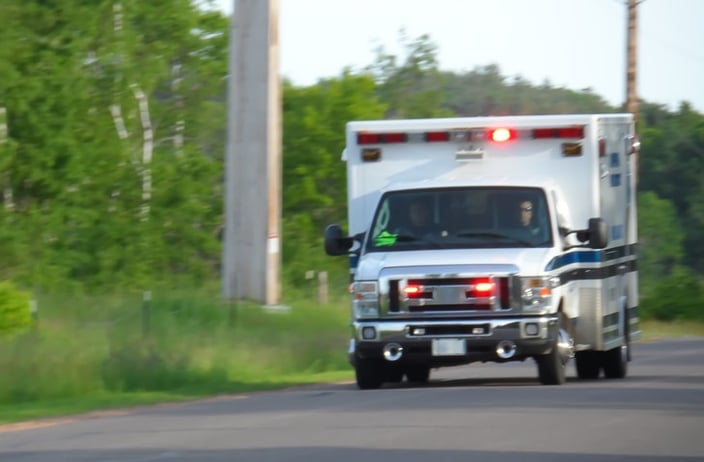
The question of whether or not your emergency unit is ready for respiratory emergencies may seem redundant. Of course you are, right? You have the proper certifications and training, a truck laden with fancy equipment, and a brain bursting with knowledge and experience. What else is there, you ask?
Even the most proficient rescuer can use a refresher. So, let’s explore some of the ways to ensure your unit is prepared for the next respiratory emergency.
Before the Call
Respiratory emergency readiness begins long before the call comes in. Preparation is fundamental to any emergency, especially those involving the respiratory tract. Equipment is key. We all know to check our equipment at the start of each shift, but simply ensuring its presence is not enough. Be sure to be really prepared:
- Inventory each bag, to ensure all tools and equipment are accounted for. It's easy to leave tools behind on calls, so don't take the previous shift's word for it that everything is there.
- Power up each piece of equipment. This includes the cardiac monitor and its associated parts, and your portable suction machine. If batteries are low or damaged, be sure to replace them.
- Check expiration dates to ensure medications are not expired. Don't forget the airway bag, and make sure your lubricants or nasal sprays are up to date.
At Patient Contact
Heading off a respiratory emergency is the best approach to treat patients with tenuous airways. It begins with your initial assessment; simply looking at the patient as you enter the room can provide valuable information about the seriousness of their condition. You must distinguish between respiratory distress or failure in your patient. The criteria are as follows:
Respiratory Distress
- Mild anxiety, but LOC should be normal
- Cyanosis should be minimal if present
- Tachycardia, possible chest tightness
- Altered breath sounds possible, including:
- Wheezing
- Rhonchi
- Crackles
- Stridor
- Pleural friction rub
- Decreased O2 saturation
Respiratory Failure
- Altered mental status
- Retractions or use of accessory muscles
- Tachycardia >130 bpm
- Decreased O2 saturation, even with oxygen therapy
- Pale skin and diaphoresis
- Absent breath sounds
- Cyanosis
- Inability to speak due to dyspnea
- Abnormal respiratory patterns, which may include:
- Cheyne–Stokes breathing – a cyclic pattern involving increases in rate and depth, followed by periods of apnea
- Ataxic breathing – similar to Cheyne–Stokes, but irregular.
- Cluster breathing – clusters of irregular respirations, varying in depth, followed by periods of apnea at irregular intervals
- Kussmaul’s respirations – fast, labored breathing punctuated with sighs
- Apneustic breathing – prolonged, gasping inspiration followed by brief, ineffective expirations
- Agonal respirations – can be deep, slow, shallow, gasping, or irregular
If you determine your patient is heading toward failure, it may be time for an advanced airway technique. Securing the airway with an endotracheal tube can benefit your patient in numerous ways, including these:
- Preventing aspiration by isolating the airway from gastric contents
- Permitting ventilation with 100 percent oxygen
- Eliminating the risk of losing mask-to-face seal
- Facilitating tracheal suctioning
- Preventing gastric distention
- Serving as an additional route for certain medications
If you decide to intubate, have the portable suction unit nearby. You will need it to clear the airway, visualize the cords, and maintain patency, should the lungs leak, froth, or bleed.
Identifying and correcting respiratory distress may prevent your patient from deteriorating to a state of failure. Be aggressive, treat accordingly, and have the right equipment on hand - especially your portable suction unit.
After the Call
Just because the call is over, and the patient has been transported, doesn't mean that your job is done. To protect against the next respiratory emergency, be sure to place your equipment back in service.
Make sure the equipment is clean and decontaminated after each patient. This is especially important for the portable suction unit. Even if the canister and tubing appear clear of debris, if the unit was used on a patient, change out ALL disposables and disinfect the unit. Suction units are inherently pathogenic - they come in contact with a range of bodily fluids (blood, mucus, vomit), all of which can transmit germs. Protect your patient and yourself.
Another important post-call process is the critique of complex patient scenarios. Meet with your crew following each respiratory emergency, and discuss the decisions you made, the treatment you rendered, your patient's response, and if anything else could have been done. Don't be afraid to discuss mistakes. It's better to learn from your mistakes rather than continuing to make them. Be constructive, not demeaning, especially for newer rescuers. We all had to learn at some point, so help the next generation of responders through mentoring and support.
Ensuring your unit's readiness for the next respiratory emergency is a team effort. Readiness takes place before, during, and after the call, so take these steps before the next emergency occurs.















